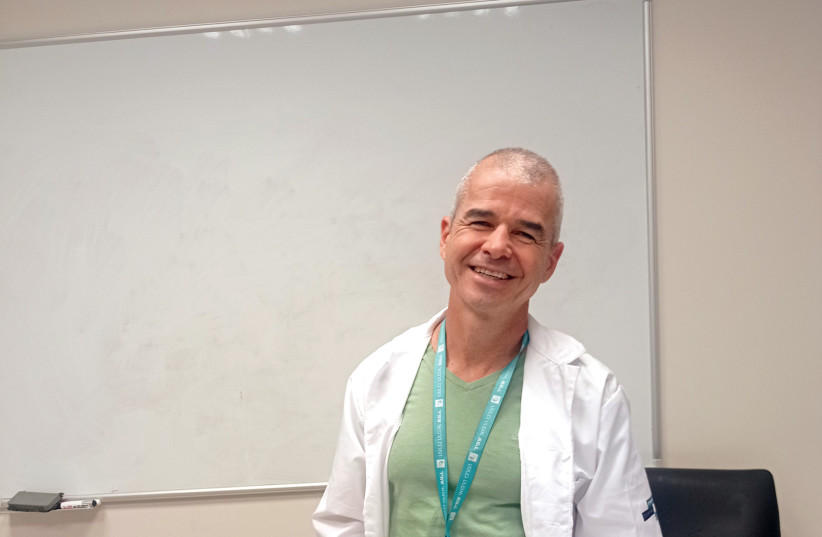PTSD patients find relief through hyperbaric oxygen therapy treatment
The sharp drop in oxygen levels sparks stem cells in the brain to proliferate, and then repair the damage that had been done to the brain.

Shachar Mizrachi spent weeks in Gaza fighting in 2014 in Operation Protective Edge. When he returned home, he found himself unable to function in normal life – he couldn’t sleep, he was afraid to leave the house, and he felt like he couldn’t talk to any of his former friends.
He tried therapy, but it didn’t help. He felt himself slipping into depression and being afraid all the time. By chance, he heard about hyperbaric oxygen therapy for PTSD and decided to try it. He attended 60 sessions of two hours each, where he sat in a hyberbaric oxygen chamber, which looked more like a public bus.
For 20 minutes, he breathed in pure oxygen through a mask similar to those you see on a plane. During that time, he played cards with patients, read, or did brain teasers on a tablet computer. For five minutes he took off the mask, breathing regular air, and then repeated the cycle several times.
“I came here like the walking dead,” Mizrachi told The Jerusalem Report. “I felt like I didn’t have anything in my life that could help me, so I went all in with this therapy.”
After 60 daily sessions (done every weekday), his PTSD improved significantly. He started sleeping more, felt better, and even met a woman who would become his fiancée.


How does hyperbaric oxygen therapy help treat PTSD?
Like many medical advances, this one was found by accident. Prof. Shai Efrati, director of the Sagol Center for Hyperbaric Medicine and Research at the Shamir Medical Center in Be’er Ya’akov, says he was investigating whether oxygen therapy could help stroke victims regain functioning.
“MRI tests show that PTSD causes physical changes in the brain,” he said. “We had the theory that it might be possible that severe emotional stress can cause damage to the brain, which is not less and sometimes even more than mechanical injury. It’s easy for us to understand that stress can cause damage to the bone. If you run too much, if you put too much pressure on your leg, you can get a stress fracture. You can also have it in the brain,” he explained.
The therapy works by the fluctuation between the 100% high pressure oxygen the participants breathe for 20 minutes wearing the mask and the normal air they breathe when they take off the mask for five minutes.
The sharp drop in oxygen levels sparks stem cells in the brain to proliferate, and then repair the damage that had been done to the brain, he said.
Hyperbaric oxygen has long been used to treat infections and other conditions, but Efrati and his partner, Keren Doenyes-Barak, were the first to use hyberbaric oxygen for PTSD.
Since the Hamas attack on October 7 that killed 1,200 Israelis and the ensuing four months of war, thousands of Israelis, both civilians and soldiers, have taken this treatment.
“Until now, most of our business was treating combat veterans with PTSD,” Doenyes-Barak said. “But since October 7, we are also treating civilians who were wounded during the attack.”
She said they currently have some 300 patients, and in the next two years expect up to 2,000. The Ministry of Defense pays the $10,000 bill for each person’s treatment. Some of the patients, she said, are veterans from the Yom Kippur War in 1973 who never received treatment.
“It’s amazing to see how they get so much better after 50 years of PTSD,” she said.
The Segol Center has partnered with a Florida hospital that is treating US veterans as well.
Mizrachi said that when the current war with Hamas began, some of his original PTSD came back. He is due to be married soon, so he signed up for a refresher series of oxygen treatments.
“I want to go into my marriage being in tip-top shape,” he said. “That’s why I came back here. I know it will help me again.”
https://www.jpost.com/health-and-wellness/mind-and-spirit/article-788296
